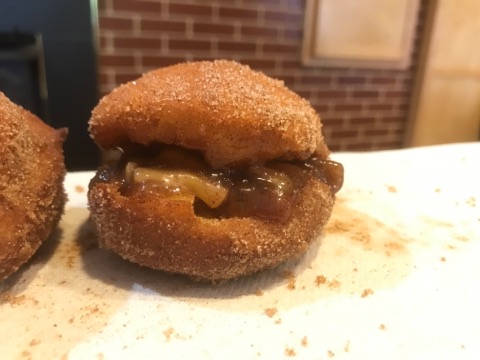When I picked out my ‘recipe’ from this week’s book, I didn’t expect it to be such a roadblock. I mean, I was on a roll, getting my cooking done every week, snapping a multitude of (poorly lit, unfocused) pictures with my phone as I went in an attempt to track the evolution of the dishes in an orderly way. I spent careful time paging through each cookbook to select a recipe that I was at least interested in, if not fully enthusiastic about. And I thought I had done the same here, even going so far as to buy the needed ingredients over a month ago. Which resulted in them sitting in the cupboard as I dodged around having to follow through on the project.

That’s when my birthday stepped in to save the day. When I was a kid, my dad would wake me up before dawn on the day of my birthday to go to the store and pick out a box of doughnuts for breakfast. I usually still manage to feed myself doughnuts during the week of my birthday celebrations, although sometimes these days they happen after the sun is up – and sometimes I make them from scratch.
What matters in this case, though, is that while I was happily pondering what types of doughnuts to make I realized that a jelly filled option was the perfect opportunity to squeeze in the experiment from this week’s cookbook.
The Cookbook:
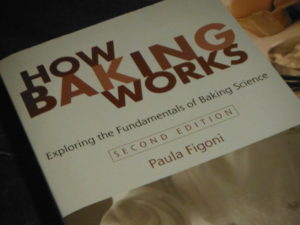
How Baking Works is another textbook I debated about including in my cookbook list, since it lacks typical recipes. Instead, its chapters are scientific discussions of common baking components (Eggs, Gluten, Sugars & Other Sweeteners, etc.), followed by a series of experimental recipes to help students see how adjusting the basic ingredients ends up impacting the final product. My most vivid memory of the textbook in school was the week that my team made exploding cupcakes. Yes, if you put too much sugar in cupcakes, they will explode while baking. While this is valuable knowledge and I appreciate a hands on lesson as much as the next girl, I tried to select a roulette project that would yield a more usable end product. I ended up picking an experiment from the Thickening and Gelling Agents chapter.
The Recipe:
Or, if you prefer, The Experiment. I used the same weights of fruit juice, starch, and sugar for three different thickeners to see how I felt about their final results. I’d used two of them previously, but this was my first tentative use of tapioca granules. Of course I now have a box of them that I will either get through somehow or have to explain to my descendants in twenty-five years as we’re deep cleaning the pantry. I executed the following procedure three times, using arrowroot, then cornstarch, and then tapioca as my starch ingredient.

weighed and measured 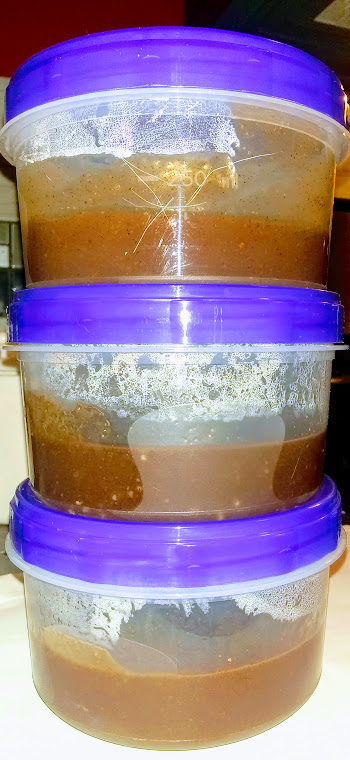
ready to chill 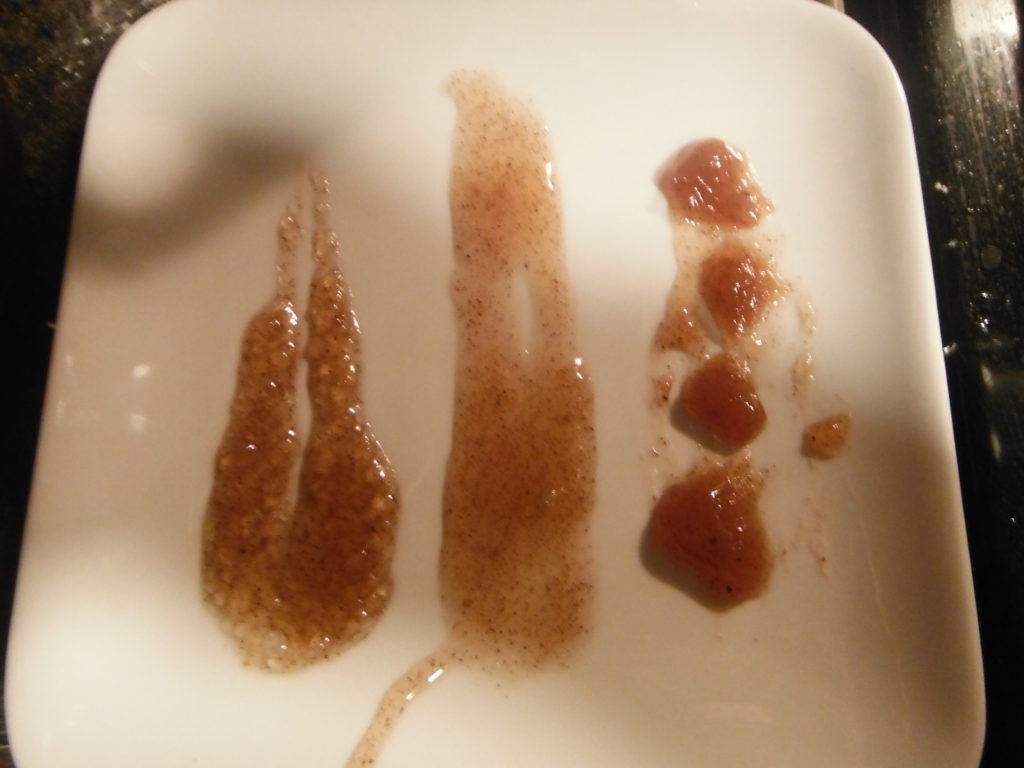
viewing the textures
Method: Combine 15 grams granulated sugar with 11 ounces of starch, 1/8 tsp cinnamon, 1/8 tsp allspice, and 1/8 tsp cloves, then whisk in 75 grams clear apple juice. Bring another 150 grams of apple juice to a boil. Add the starch/juice mixture to the boiling liquid, stirring constantly. Boil for two minutes, then remove from heat. Test consistency while hot, then cool and test consistency when chilled.
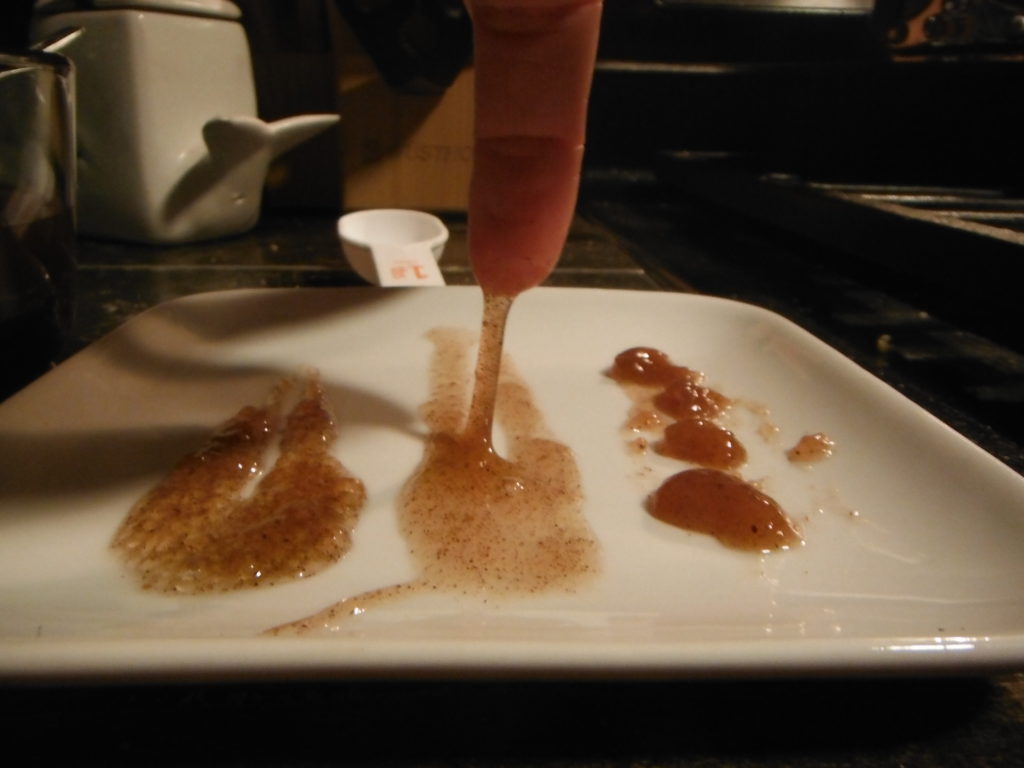
The Verdict:
Arrowroot is seriously weird. But so is cinnamon, which is probably part of the reason why the original experiment left it out. Still, in comparison to cornstarch and tapioca, the arrowroot was a much less palatable texture, becoming a mucous or faux ectoplasmic substance that stretched like slime and refused to dissolve smoothly on the tongue. The cornstarch version was smooth and fully set, with perhaps a bit too much thickening agent for the volume of liquid, while the tapioca reminded me of bubble tea with its little pops of texture. The tapioca was also the runniest of the three, seeming more like a thick sauce than a filling in consistency. And for some reason which I cannot explain, the tapioca seemed to end up sweeter than the other two versions, even though I strictly measured and weighed every ingredient.
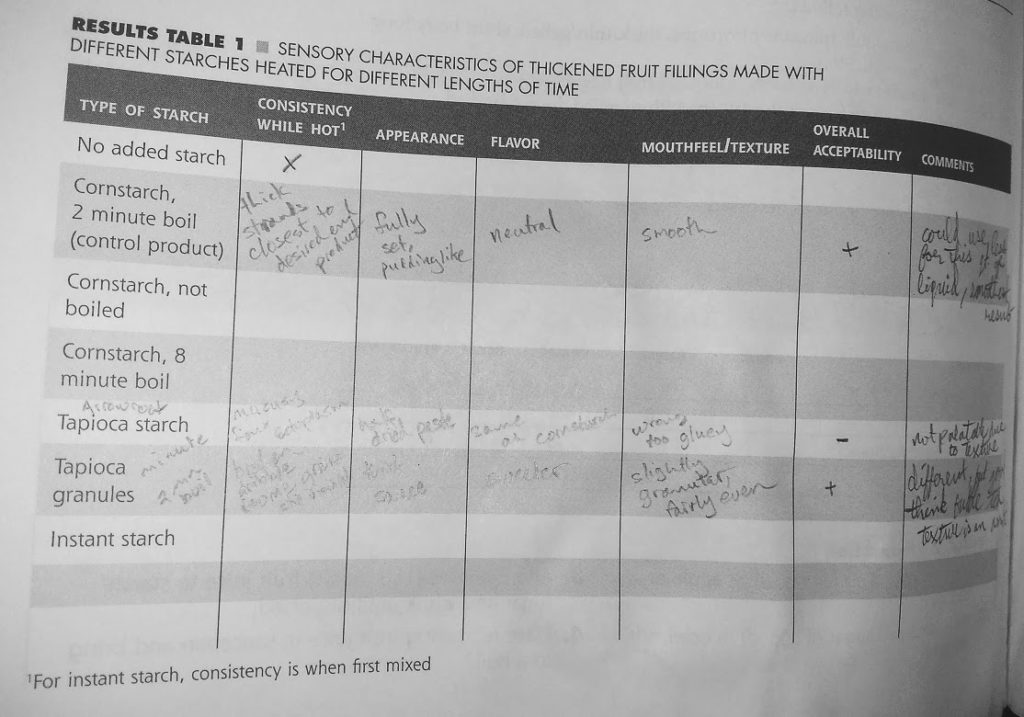
After judging the results individually, I tossed them all together in a bowl and mixed in an apple than I had sauteed in butter and sugar to turn my experiment of the week into a quite functional doughnut filling. It also made good Greek yogurt smoothies with a bit of milk and oats added in. And I turned a bit more into apple crisps for a quick breakfast last week. As far as experimental food goes, it’s been a handy pantry ingredient over the last few days. Overall, that’s a mission accomplished, but I think this book might belong in the general library rather than specifically on the cookbook shelf.
